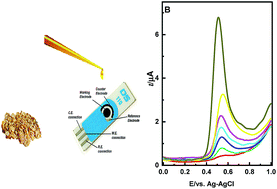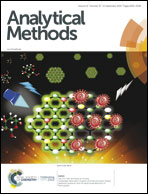Voltammetric behavior of mycotoxin zearalenone at a single walled carbon nanotube screen-printed electrode
Abstract
Zearalenone (ZEA) is a mycotoxin produced by a range of Fusarium fungi that infect cereals. ZEA may accumulate in cereals before the time of harvest. This paper describes the electrochemical behavior of zearalenone (ZEA) at a single-walled carbon nanotube screen-printed electrode (SWCNT-SPCE) using cyclic voltammetry (CV), differential pulse voltammetry (DPV) and electrochemical impedance spectroscopy (EIS). A single irreversible oxidation peak was observed. The DPV peak current of ZEA at a SWCNT-SPCE was noticeably enhanced due to ZEA adsorption on the electrode surface. Interestingly, the electrode showed no surface fouling by the oxidation products of ZEA and the repeated use of the electrode is feasible. The electrodeposited film was examined in an Fe(CN)63−/4− redox probe using CV and EIS measurements. A differential pulse adsorptive stripping voltammetric (DPASV) method for the determination of ZEA was developed. Under the optimized conditions, the anodic peak current of ZEA varies linearly with the ZEA concentration in the range 2.5 × 10−8 − 1.0 × 10−6 M with a detection limit (LOD) of 5.0 × 10−9 M. The method was applied for the quantitative analysis of ZEA in cornflake samples.



 Please wait while we load your content...
Please wait while we load your content...